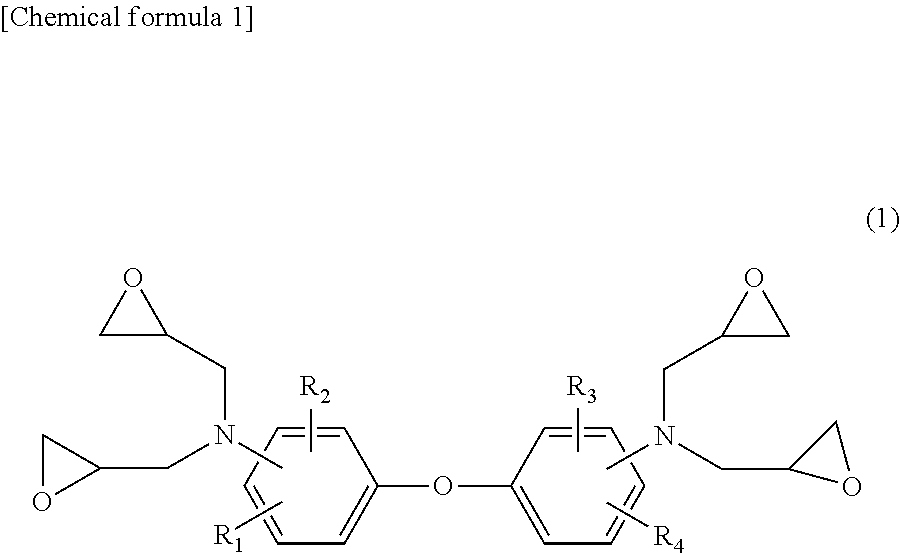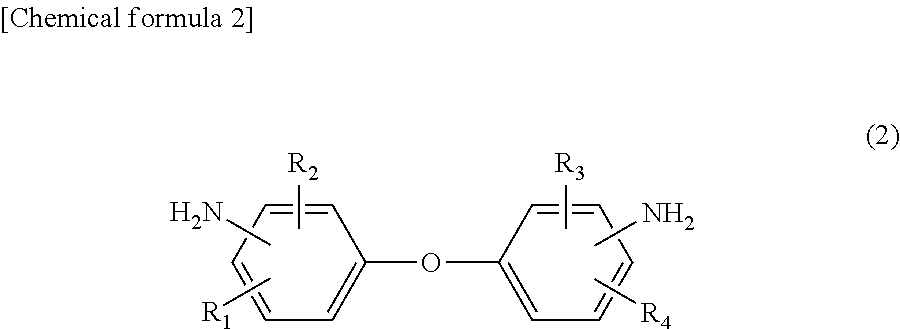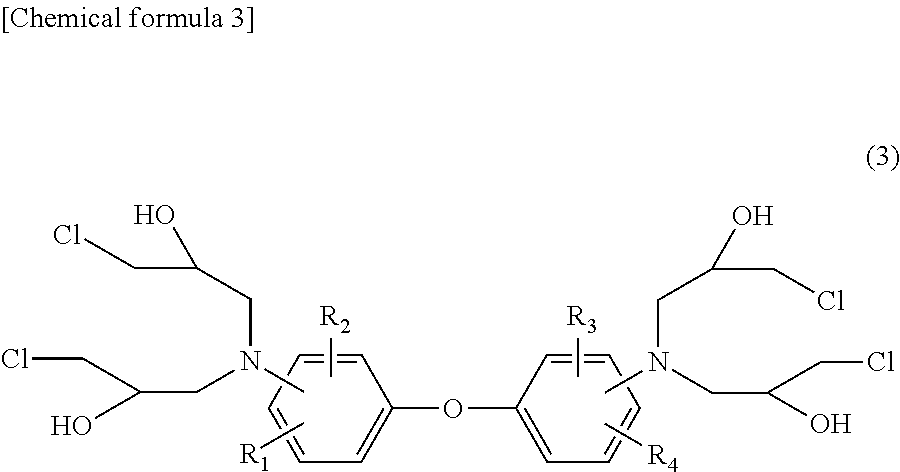Epoxy resin composition for use in a carbon-fiber-reinforced composite material, prepreg, and carbon-fiber-reinforced composite material
- Summary
- Abstract
- Description
- Claims
- Application Information
AI Technical Summary
Benefits of technology
Problems solved by technology
Method used
Image
Examples
example 1
[0134]A kneader was used to knead 50 parts by mass of 34TGDDE, 30 parts by mass of PxGAN and 20 parts by weight of “Araldite (registered trademark)” MY721 at 160° C. for 2 hours, and the mixture was subsequently cooled to 80° C. Then, 40 parts by mass of SEIKACURE-S were added, and the mixture was kneaded to obtain an epoxy resin composition. Table 1 shows the chemical composition and rates (each number in Table 1 is in parts by mass).
[0135]Releasing paper was coated with the obtained epoxy resin composition by a resin weight per unit area of 50 g / m2 by using a knife coater, to form a resin film The resin film was overlaid on each of the two sides of carbon fibers (weight per unit area 200 g / m2) paralleled in one direction, and the laminate was heated and pressurized at a temperature of 100° C. and at 1 atmospheric pressure using heat rolls, to impregnate the carbon fibers with the epoxy resin composition, thereby obtaining a prepreg. The volume content of the carbon fibers of the c...
example 6
[0139]A kneader was used to knead 60 parts by mass of 34TGDDE, 40 parts by mass of PxGAN and 10 parts by mass of PES5003P at 160° C., and it was visually confirmed that PES5003P was dissolved. Then, the mixture was cooled to 80° C., and 35 parts by mass of SEIKACURE-S were added. The mixture was kneaded to produce an epoxy resin composition. Table 2 shows the chemical composition and rates (each number in table 2 is in parts by mass).
[0140]Releasing paper was coated with the obtained epoxy resin composition by a resin weight per unit area of 50 g / m2 by using a knife coater, to form a resin film. The resin film was overlaid on each of the two sides of carbon fibers (weight per unit area 200 g / m2) paralleled in one direction, and the laminate was heated and pressurized at a temperature of 100° C. and at 1 atmospheric pressure using heat rolls, to impregnate the carbon fibers with the epoxy resin composition, thereby obtaining a prepreg. The volume content of the carbon fibers in the c...
PUM
| Property | Measurement | Unit |
|---|---|---|
| Percent by mass | aaaaa | aaaaa |
| Percent by mass | aaaaa | aaaaa |
| Fraction | aaaaa | aaaaa |
Abstract
Description
Claims
Application Information
 Login to View More
Login to View More - R&D
- Intellectual Property
- Life Sciences
- Materials
- Tech Scout
- Unparalleled Data Quality
- Higher Quality Content
- 60% Fewer Hallucinations
Browse by: Latest US Patents, China's latest patents, Technical Efficacy Thesaurus, Application Domain, Technology Topic, Popular Technical Reports.
© 2025 PatSnap. All rights reserved.Legal|Privacy policy|Modern Slavery Act Transparency Statement|Sitemap|About US| Contact US: help@patsnap.com



